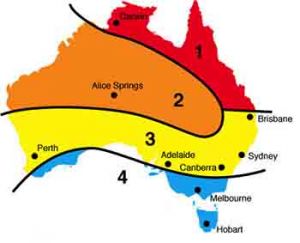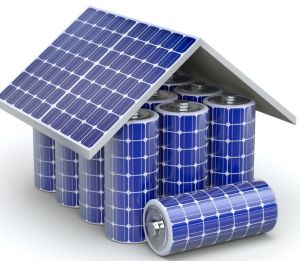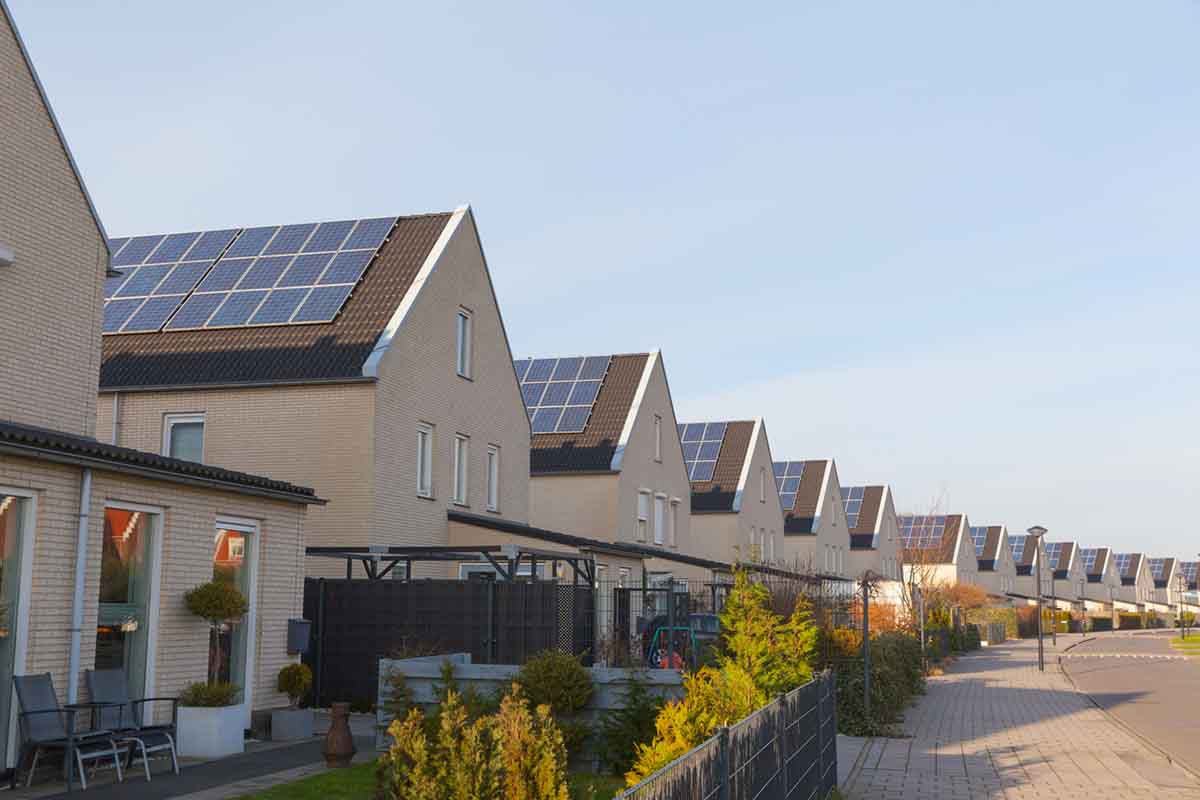New South Wales has its fair share of sunshine, so why not make the most of it with solar? With hundreds of thousands of homes and business already taking advantage of the sun’s power, it’s worth considering if solar power can help you save as well.
Whether you’re looking to get started with solar or simply upgrade your system, this article will walk you through everything you need to know about solar, including the benefits, costs, where to buy and how to find the best system for your home.
On this page:
Advertisement
How much do solar panels cost in NSW?
It costs between $3,700 and $8,500 for a standard solar power system in New South Wales, depending on the size of the system. Generally speaking, a small system (less than 3kW) will set you back up to $3,000, whereas a larger system can cost over $6,000.
While solar is by no means cheap, solar in New South Wales is considerably cheaper than the national average. Better yet, solar has become considerably cheaper in recent years and prices are expected to continue to come down. Below you can see just how much you can expect to pay for a solar system and how it compares to the rest of the nation.
| 3kW | 4kW | 5kW | 6kW | 7kW | 10kW | |
|---|---|---|---|---|---|---|
| New South Wales | $3,780 | $4,210 | $4,750 | $5,140 | $6,170 | $8,570 |
| National average | $4,270 | $4,920 | $5,640 | $6,460 | $7,440 | $10,390 |
Source: Solar Choice – July 2023 solar price index. Prices are after applied STC discounts and GST.
These prices reflect estimated costs within Sydney, NSW. The actual cost of your solar panels can vary greatly depending on where you are, what system you’re after and your installer. For a specific quote, you should get in touch with your preferred installation specialist.
NSW Solar Plans
Here are some of the cheapest solar-specific deals from the retailers on our database. These costs are based on the Ausgrid network in Sydney but prices will vary depending on your circumstances. We show one product per retailer, listed in order of lowest price first. Annual price estimates assume general energy usage of 3911kWh/year for a residential customer on a single rate tariff. Price estimates exclude solar feed-in tariff credits. This table may include products from referral partners†. Our database may not cover all deals in your area, and please check retailer websites for up to date information.
How many households have solar in NSW?
According to the Clean Energy Regulator, there are around 890,000 solar installations in New South Wales. This makes New South Wales the Australia’s second largest solar state, behind Queensland.
NSW Solar Rebates and Incentives
New South Wales residents have access to two solar incentives: Small-scale Technology Certificates (STCs) and feed-in tariffs (FiTs). Granted, the solar incentives are not as generous as they once were, but they can still save you thousands of dollars over the life of your system.
Small-scale technology certificates in NSW

When you install a renewable generator be it solar, wind, hydro or other, the Australian government awards a number of STC’s in proportion to the expected energy output over the life of that generator. These certificates can be sold for around $40 each, serving as a form of rebate that can potentially save thousands on installation costs.
The number of STC’s a solar customer receives depends on the installed system size as well as the location – the sunnier the area, the more STC’s. Australia is split in to four STC zones with zone 1 receiving the most STC’s and zone 4, the least. The majority of New South Wales sits in zone 3, however the North-West area of the state is situated in zone 2.
Feed-in tariffs
If your panels produce more electricity than what’s being consumed, the excess is exported to the electricity grid. Your electricity retailer will pay you with a small deduction on your bill for each kilowatt-hour (kWh) of electricity exported – usually around 7 to 12 cents per kWh.
The solar bonus scheme ended December 2017, and all customers who were receiving a government subsidised feed-in tariff of 20c or 60c per kWh were transitioned to another feed-in tariff.
NSW solar companies offering feed-in tariffs
New South Wales has a well-developed energy market, with a myriad of retailers offering a range of solar products. Feed-in tariffs in NSW can be anywhere from 1c/kWh to 20c/kWh or more, meaning it’s definitely in your financial interests to shop around. Keep in mind that deals with high feed-in tariffs might include smaller discounts or increased electricity usage rates. This means a good FiT might not translate to a good deal.
Low-income solar scheme
In NSW, eligible household can choose to forego their Low Income Household Rebate – valued at $285 a year – in exchange for a 3kW solar system. While that is a relatively small solar system, the Australian Government states that it could save households $600 per year, which is more than twice the rebate. This offer is currently only open to concession holders with an eligible property.
Solar Batteries in NSW
 Solar battery storage is growing in popularity, and already thousands of NSW households and businesses are getting on board. Solar batteries help you get the most of out of your panels by catching and storing excess solar power generated by your panels to use later on. Without a battery, solar power that is not used almost as soon as it’s generated will flow on to the grid.
Solar battery storage is growing in popularity, and already thousands of NSW households and businesses are getting on board. Solar batteries help you get the most of out of your panels by catching and storing excess solar power generated by your panels to use later on. Without a battery, solar power that is not used almost as soon as it’s generated will flow on to the grid.
For each kWh of electricity fed onto the grid, the customer receives a rebate of a few cents. This rebate is called a ‘feed-in tariff’ (see above). Since electricity usage rates are usually much higher than feed-in tariff rates, customers can save more by storing excess solar with their battery to use for themselves. This way you reduce the amount of electricity you consume from the grid and save even more on your power bill.
While it is true that a solar battery can help lower your power bills even further, they unfortunately do not come cheap. Generally speaking, you can expect to pay between $8,000 and $12,000 for a relatively standard battery, though prices vary considerably depending on the size of the unit. It is also more expensive to retrofit a battery rather than having it installed at the same time you buy solar panels. It can take 10-15 years for a battery to pay for itself, but this once again depends on the price of the battery and your energy usage habits.
Is it worth getting solar panels in NSW?
While solar might not be the same sure-fire investment that it once was under previous generous government incentives, the falling price of solar, plus rising electricity rates and competitive feed-in tariffs, means a solar system can still save you money.
In addition, complementary solar technologies such as storage systems from retailers may mean we could be living independent of the energy grid and energy providers all-together within a few decades.
FAQs about solar in NSW
Solar panels obviously need sunlight to work – the sunnier your area, the more you stand to save with solar panels. The sunniest parts of New South Wales are west of Dubbo. Areas along the coast receive less sunlight, particularly from Wollongong to the Victorian border.
A solar system usually adds value to your property, but the amount it adds largely depends on the property market – not the value of the system itself. With that in mind, if you’re considering installing solar before selling your home, talk to the real estate first to see if that will help the home’s value.
You’re in luck, Canstar Blue also compares solar installers. Over a thousand Aussies have weighed in and rated their solar panel installer on factors such as customer service and cost to help you get a better idea of what business to go with.
A solar system will produce approximately four times its listed size each day. For example, a 3kW system will produce around 12kWh of electricity. The average household will use around 16 to 20 kWh of electricity per day – however only a fraction of this is used through the middle of the day when solar is at maximum output. Unless you have a generous feed-in tariff or solar storage system, a large solar system might cost you more than you will reasonably recoup in bill savings.
Virtually any roof is suitable for solar, however note the following:
- Solar panels must be installed at a particular angle to operate correctly. If your roof is not at this angle, the installer may charge more to have angled mounts installed
- Your roof should be in good condition before installing the panels so as to not undermine the roofs integrity
- Your roof needs to be clear of shade from surrounding trees and other obstructions
In NSW, you generally aren’t required to seek council approval when installing solar panels that aren’t facing the street on a residential property. If you are looking to install street-facing solar panels however, you may need council approval, especially if the building is heritage listed or in a heritage listed area like Inner West and North Shore.
Your chosen installer should have an understanding of the regulations around solar installation but more information can also been found on the NSW government website.
It’s also important to keep in mind that if you are a renter looking to install solar panels, you may need your landlord’s approval first.
Origin Energy generally has one of the highest solar feed-in tariffs (FiTs) available to Sydneysiders and customers in NSW. Not only does Origin have reasonably high feed-in tariffs, it also offers solar-specific deals tailored to households with solar panels. As always, some terms and conditions apply in order to receive a higher FiT rate.
Like anything in energy, when installing solar, you aren’t just paying for the hardware, but the installation, permits and labor too. As solar PV panels themselves are already quite expensive to begin with, once you start adding in labour and overhead costs, naturally it racks up quite a bill.




Share this article